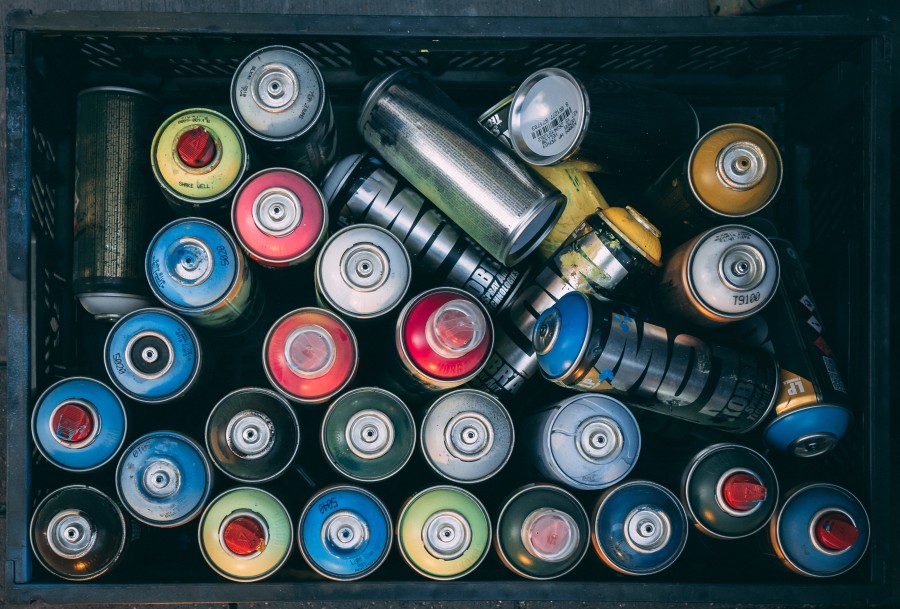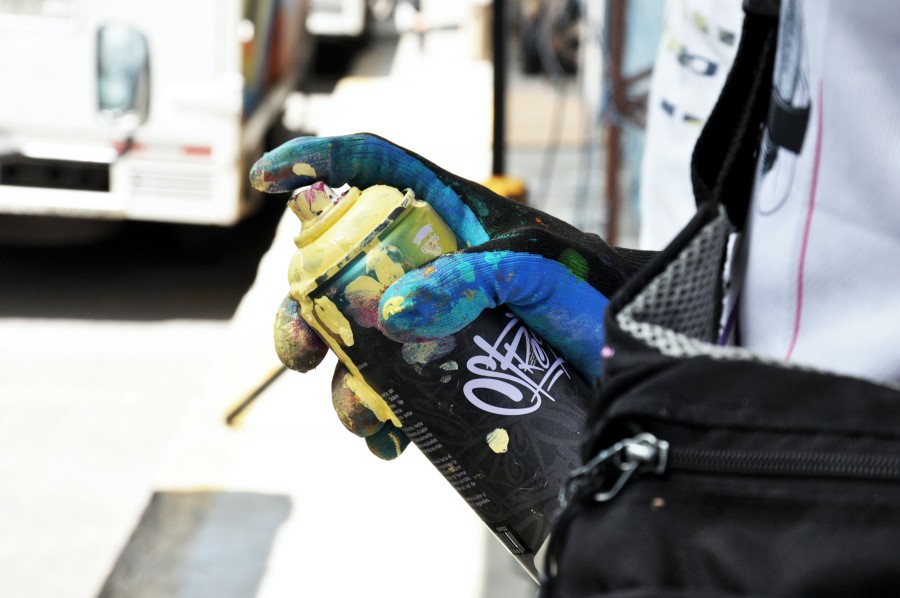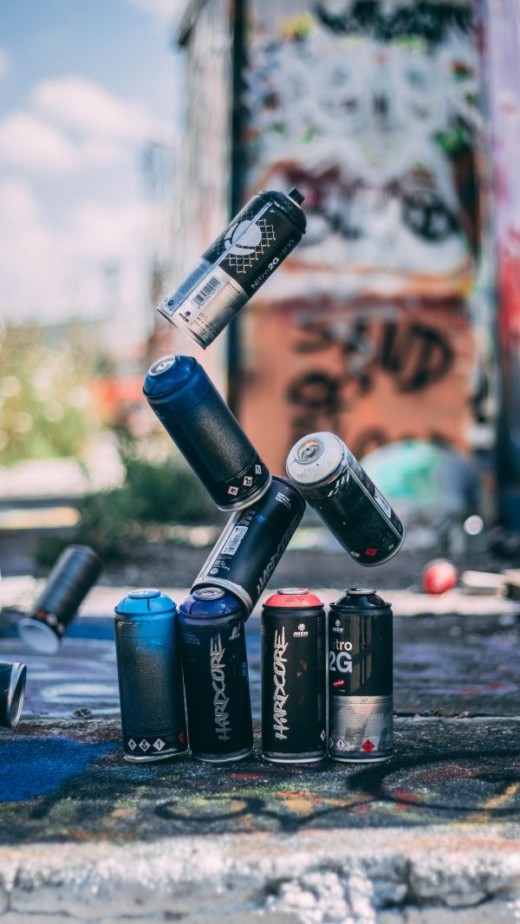
Spray paints are one of the easiest ways to paint your motorcycle, and that is why they are used so much. The portability and versatility of spray paint are by far its greatest advantages.
You might use it to decorate your home, car, or furniture, or you might even emerge as the next Picasso. Compared to the conventional method of painting with a brush, it requires half the effort and produces twice as much.
So, how long does it take for spray paint to dry? Spray paint dries in a couple of minutes, and it can take as much as a couple of hours or even days. The time it takes for your spray paint to completely dry is determined by the surface you spray it on as well as the outside elements.
Knowing how long it takes for the paint to cure is crucial, especially if you plan to recoat. If you don’t get it, your project could be ruined.
Never meddle with wet paint; it’s simpler to correct mistakes when it dries.
In this article, you will learn a lot of useful information about spray paint. That is why I suggest you stay with me and let’s get to the topic.
Table of Contents
How Much Time Does Spray Paint Need to Dry?

Spray paint typically dries in around 10 minutes on average. But, the full drying process typically takes a few hours. You must keep in mind that the amount of time it takes to dry is dependent on a number of variables, including the surface it is painted on, the kind of paint used, and the number of coats implemented.
This response has likely been given before, but it also relies on the following factors:
1. Spray Paints Used and Their Qualities
You can choose from a variety of spray paints on the market. The unique design of each product has a significant impact on how long the drying process can take.
The problems outlined in this post will affect how long it takes for things to dry. Therefore, read through this part to gain a thorough idea of the kind of paint you need to use.
2. Surface Material Effect
Every object has a texture, whether it be smooth or rough; occasionally you can notice it, while sometimes you need to touch it. Any surface, no matter how smooth, has a tiny texture.
According to the general rule, flat surfaces dry more quickly. On the other hand, if it is harsh, the time needed will grow accordingly.
Metal surfaces dry up pretty quickly, thus it’s important to consider environmental considerations, particularly when dealing with metal. The length of time it takes for drying also dramatically increases with increased heat and humidity.
Wood takes a long time to dry because of absorption. Before painting, it is advised to use a wet rag to remove any dirt from the surface.
If you use high-grit sandpaper, any abnormalities can be reduced. Another approach to take into account is pre-coating with the precise formulation.
When it comes to rubber and plastics, tread lightly. The amount of time needed for various materials to dry will differ depending on their texture.
Note: The kind of spray paint you’ll be using has a big impact on this difference. Use high-quality, wash-resistant paint, according to professionals.
3. Epoxy or Polyurethane Paint
The market’s quickest drying spray paint is epoxy or polyurethane. In this procedure, you need to wait for the two ingredients to interact chemically.
You’ll see a surface dry happening in five minutes. Typically, it takes an hour to complete a hard dry.
4. Lacquer Paint
You’ll have a quicker drying time if you use lacquer spray paint. If you use water to dilute the paint in some varieties of latex, you can still get the desired outcome.
Utilizing a thermoplastic polymer, lacquer paint is produced. Surface drying can be completed in as little as three minutes and no more than five. Typically, a hard dry needs 3 hours.
5. Enamel Paint
Enamel paint begins to dry in a matter of minutes. The solvent’s rate of evaporation is the main factor causing that. In this case, the air in the formula causes the polymers to cross-link, creating a hard surface.
It takes between ten and thirty minutes for the application to dry the surface. A thorough dry normally takes eight hours.
6. Natural Elements
A critical element that negatively affects the total drying process is humidity. Low-humidity areas are typically preferred for painting projects.
Warmer temperatures will hasten the drying process of the paint. Except for hot metals; in that instance, strive to lower the metal’s temperature if at all possible.)
Tip: Operating in temperatures below freezing requires special vigilance. The work area needs to be well-ventilated if you’re painting in below-freezing temperatures.
The spray gun and the area that will soon be painted both need to be frost-free. Work fast since cold temperatures might affect the consistency of the paint.
Note: It’s important to move rapidly when using paint.
When working in subfreezing weather, please allow more time for drying. It’s ideal to work inside if the job has a tight deadline and you’re painting a moveable object. If not, attempt to begin painting right before noon.
Drying Stages
There are four stages of drying for all paints. Understanding the stages of spray paint drying is crucial for estimating how long the color might take to finish drying.
1. Surface Dry
Surface drying occurs when the paint’s solvent evaporates. During this phase, the paint’s surface will have a thin layer. But you must exercise caution because this layer could be sticky.
2. Touch Dry
You can touch the layer of paint. However, if you exert even a little pressure, it will break and stick to your finger.
3. Hard Dry
The paint is dry at this point, but you cannot press on it. Despite the fact that the paint is no longer sufficiently sticky to go on the finger, applying pressure will nevertheless leave your fingerprints on the paint.
4. Complete Dry
It is done. You can press against it or touch it. Recline and give yourself a pat on the back for a job well done.
How Thick Is the Paint?

It will take longer for the paint to cure if it is thicker. While the ratio of the solution of thinner, paint, and water may affect the thickness depending on the paint type you are using.
The Storage Life of Spray Paint
Market-available spray paint cans and sealed aerosol paint cans shouldn’t expire and should last forever. It is advised that you finish using a can by the “Best use before” date printed on the body of the container.
But, you might want to consider if you are making the best use of their funds before you go out and purchase yourself a can of spray paint.
So you might shake the spray paint can in order to gauge the color’s quality beforehand.
The spray can is therefore considered to be in working order if it sprays out. And if it’s anything else, you should look into your alternatives and acquire a new can of spray paint in place of the old one.
Even though lacquer paint can be kept for decades in a capped tin, the volatile components eventually vaporize since the tin can never be completely sealed.
However, there is no need to be concerned because all that is required to make it useful once more is the addition of some thinners.
Differently, the formula for enamel contains driers. The useful time may differ from brand to brand. This issue also depends on how well the manufacturing procedure was done.
Note: Please keep in mind that the state in which you store the paint containers is very important. The adversary is humidity.
How Can I Speed Up the Drying of Spray Paint?
Is the paint taking too long to dry? Is there a time limit on your project? Do you need the room to be ready for use right away?
Not to fear; there are strategies for accelerating the drying process.
1. Heat the Area Around the Object
Simply said, warmth is preferable to coldness. The better it is for the paint to dry quickly at your desk, the warmer it should be.
When working indoors, you can raise the temperature in your home by using the thermostat or a small heater.
Even a hairdryer placed close by might be used to hasten to dry in limited areas. But keep in mind that raising the temperature won’t significantly speed up the procedure.
The sun is your ally while painting outside.
2. Put A Light Coat Of Paint On
There will be less paint available for initial drying if the paint layer is thin. So attempt to apply a thin layer of paint for faster drying. If the initial coat didn’t cover the area well enough, don’t recoat over wet paint.
Tip: Please wait until the final layer has dried before considering applying another coat. Even professionals rush occasionally and overlook this.
3. Use a Fan to Circulate the Air
The wind is your best pal if the sun is your friend. This amazing piece of technology can create wind for you if there is none.
It is known as “Fan.” Because the directors and producers never allow them enough time, art directors in film units heavily rely on fans to prepare the set in a timely manner.
The movement of the surrounding air accelerated the rate of evaporation. To get results, you might employ heavy-duty stand fans or ceiling fans.
CAUTION: If the workstation isn’t clean, don’t use the fan. It’s possible for the wind to carry material like dirt and dust that will attach to the paint.
Note: Start using the fan once the second drying stage is complete (touch dry).
4. Reduce Humidity
If you are working indoors in a humid climate, running a dehumidifier in the space can be an option.
Since it’s raining outside, it’s advised to keep the windows closed. Please relocate any moving objects you are painting during this time into the less humid room.
It’s the twenty-first century, the era of the internet and limitless knowledge. Use that to your advantage if you’re painting outside.
Check the weather in advance and schedule the painting project for a wonderful, warm, dry day. The best time to remodel your home’s exterior is not during the rainy season.
Tip: Once your schedule is set, get going as early as you can and make the most of your daylight hours. Again, sunlight is beneficial.
To Summarize
Spray painting is the quickest type of painting and a mainstay of contemporary art culture. You can use it to paint metal, wood, and other objects in addition to using it as a work of art.
All the necessary information has been covered in this article. We sincerely hope that our in-depth guide to using spray paints was useful and instructive.
As we’ve indicated, follow the directions carefully and pay attention to the warnings. In case you forgot, the general rule is that the drying process moves quickly on a smooth and even surface. Contrarily, a rough and uneven surface significantly lengthens the drying period.
However, that’s not all; you can also make use of environmental elements to hasten the drying process. We sincerely hope that you have found this article to be educational and useful.
